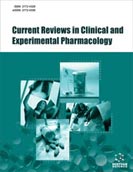Abstract
Objective: The aim of the present study was to formulate fast disintegrating sublingual tablet of Timolol maleate (TM) for the potential emergency treatment of hypertension and also its potential to circumvent the first-pass metabolism and to improve its bioavailability. The demand of fast disintegrating sublingual tablet has been growing mainly for geriatric because of potential emergency treatment.
Methods: The tablets were prepared by direct compression method by incorporation of two disintegrants Ac-di-sol and sodium starch glycolate (SSG). Importance behind the incorporation of super-disintegrant was to break the tablet in less time period which imparts release of drug. To study the effect of independent variables (Ac-di-sol and SSG) on disintegration time and in vitro drug release a 32 factorial design was utilized. Spectroscopic techniques like Ultraviolet (UV) and Fourier transform infrared spectroscopy (FTIR) were utilized for study physiochemical properties of drug. The formulations were evaluated for crushing strength, weight variation, thickness, friability, drug content, wetting time, In-vitro disintegration time, In-vitro dissolution study.
Results: FTIR studies showed no evidence of interactions between drug and excipients. Formulation (F4) was compared with rest of the formulations for disintegration time, wetting time, % drug release, content uniformity which were found to be superior to others. The Disintegration time of all nine formulations was lies between 31 ± 1.732 s to 127 ± 8.718 s. Except the formulation (F1) and formulation (F9) all remaining formulations showed diffusional exponent (n) values of peppas model were lies between 0.624 - 0.9333 means that these formulations followed anomalous transport for release of drug which is a combination of diffusion and erosion.
Conclusion: It was concluded that combination of super - disintegrants (Ac-di-sol: SSG in 3:4) showed significant (p < 0.001) disintegrating time, wetting time and water absorption ratio than the rest of the formulations. We successfully developed the sublingual tablet of TM with achieving desired objective.
Keywords: Sublingual, disintegration time, Compatibility, Ac-di-sol, SSG, drug release.
 19
19




